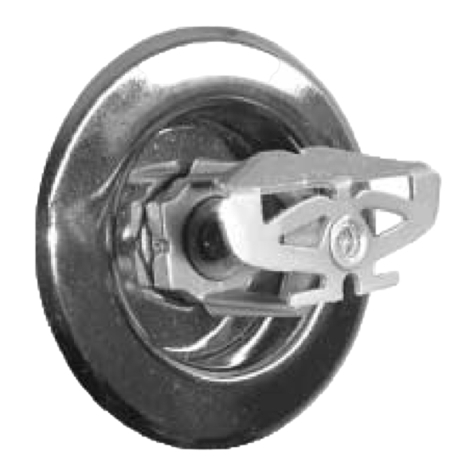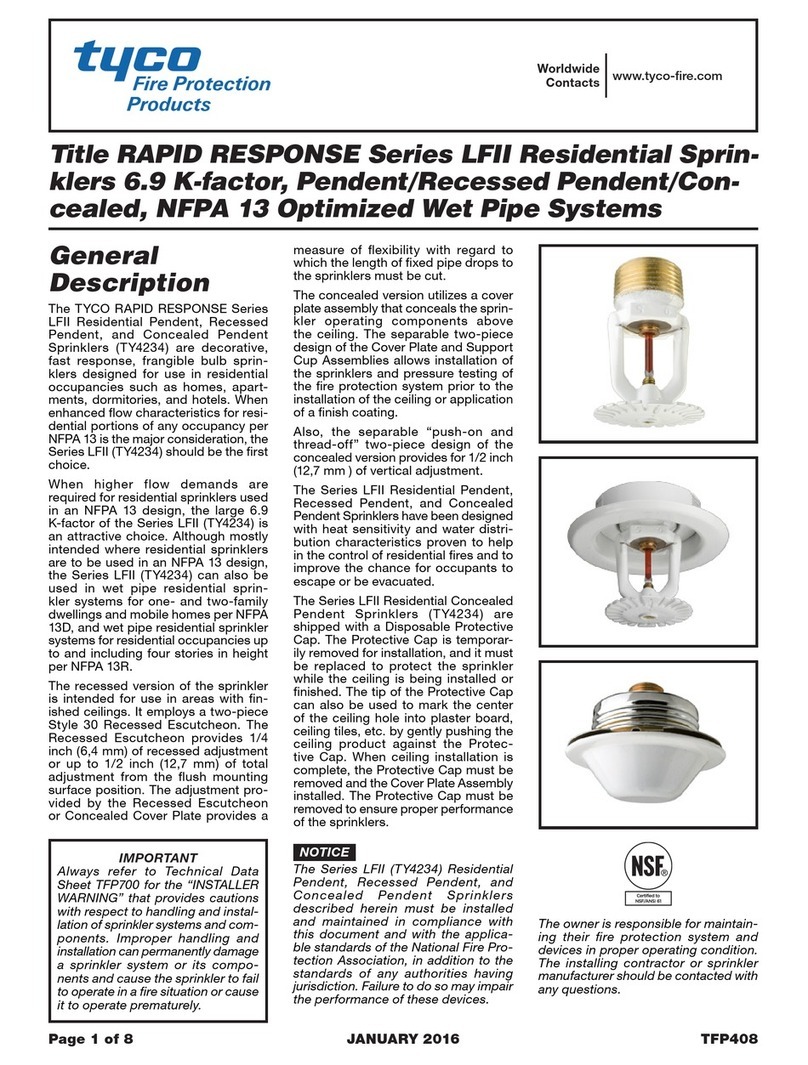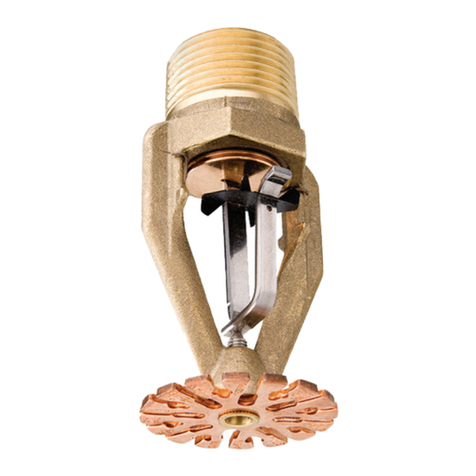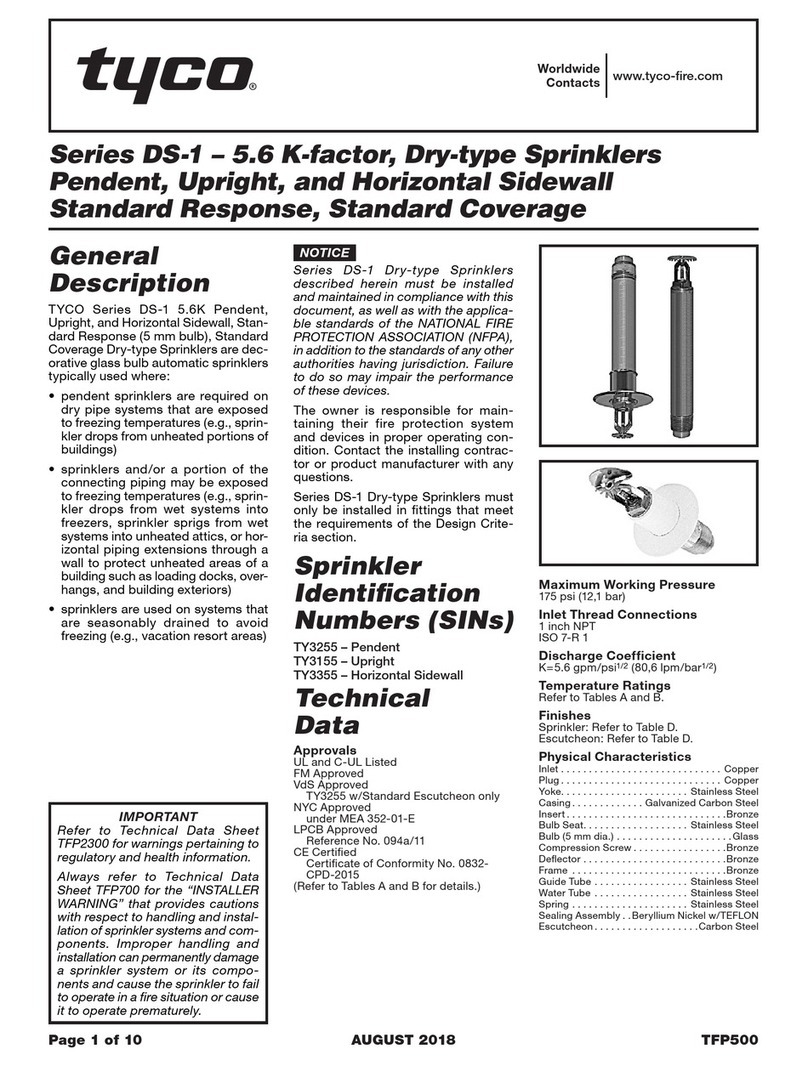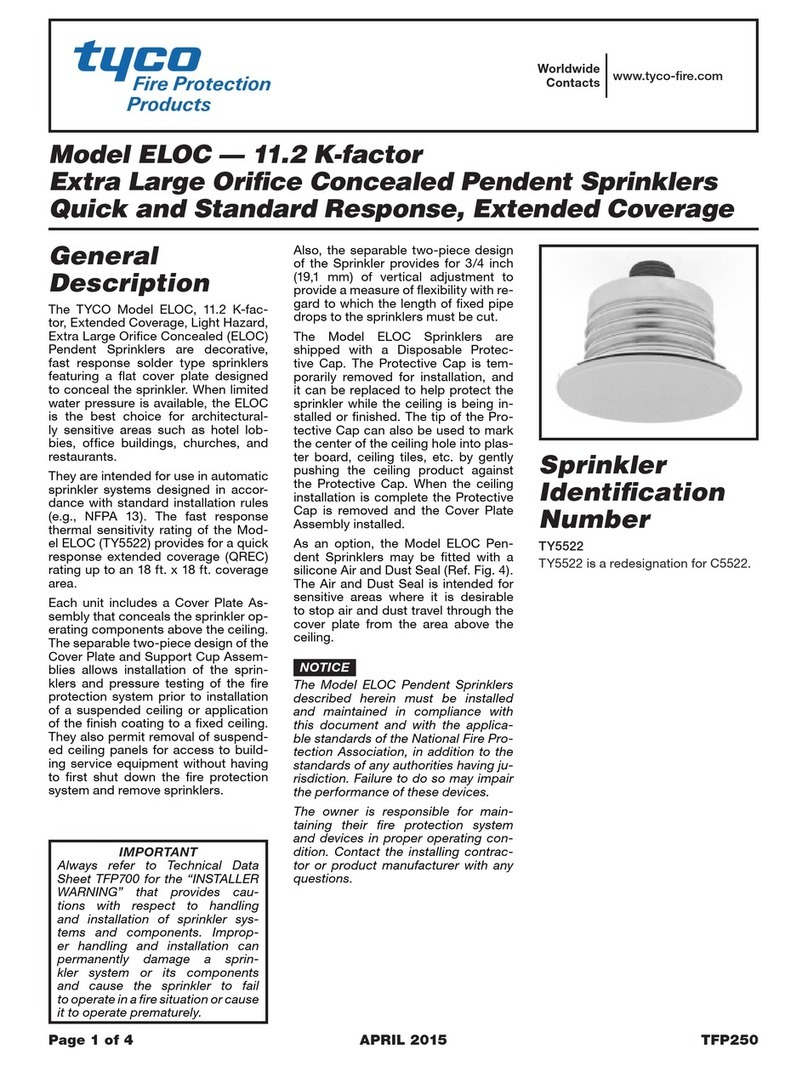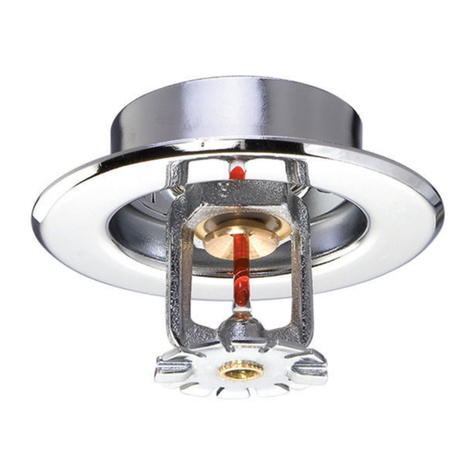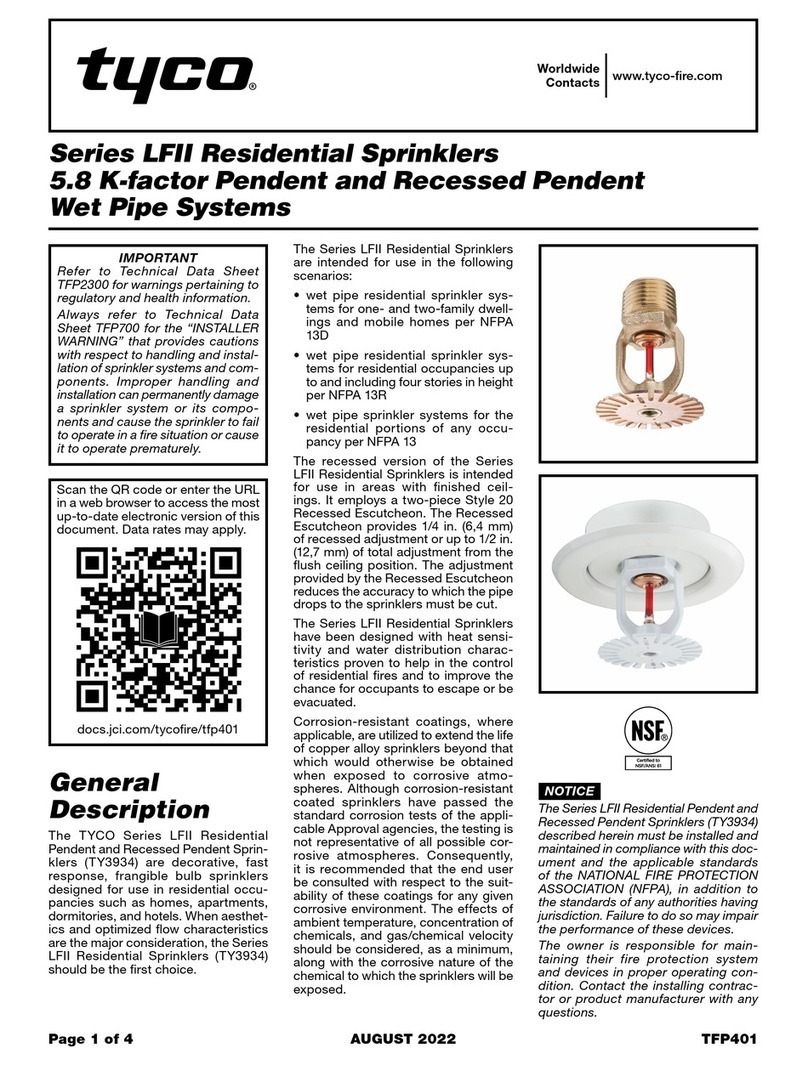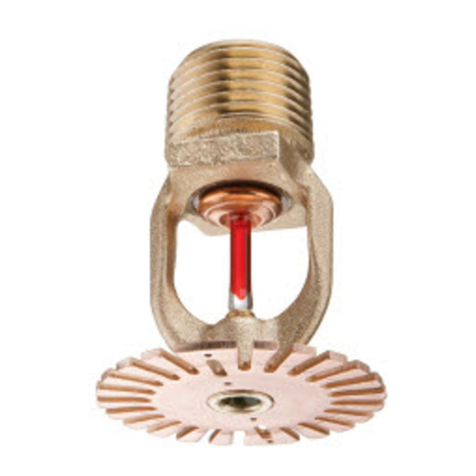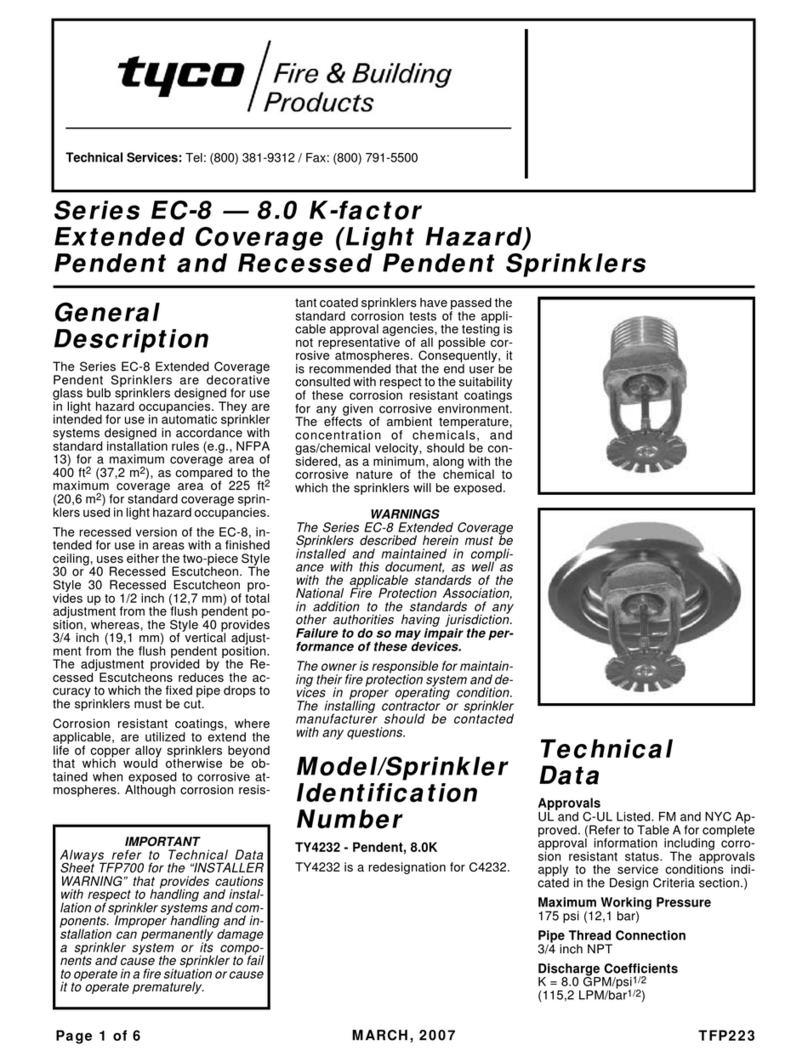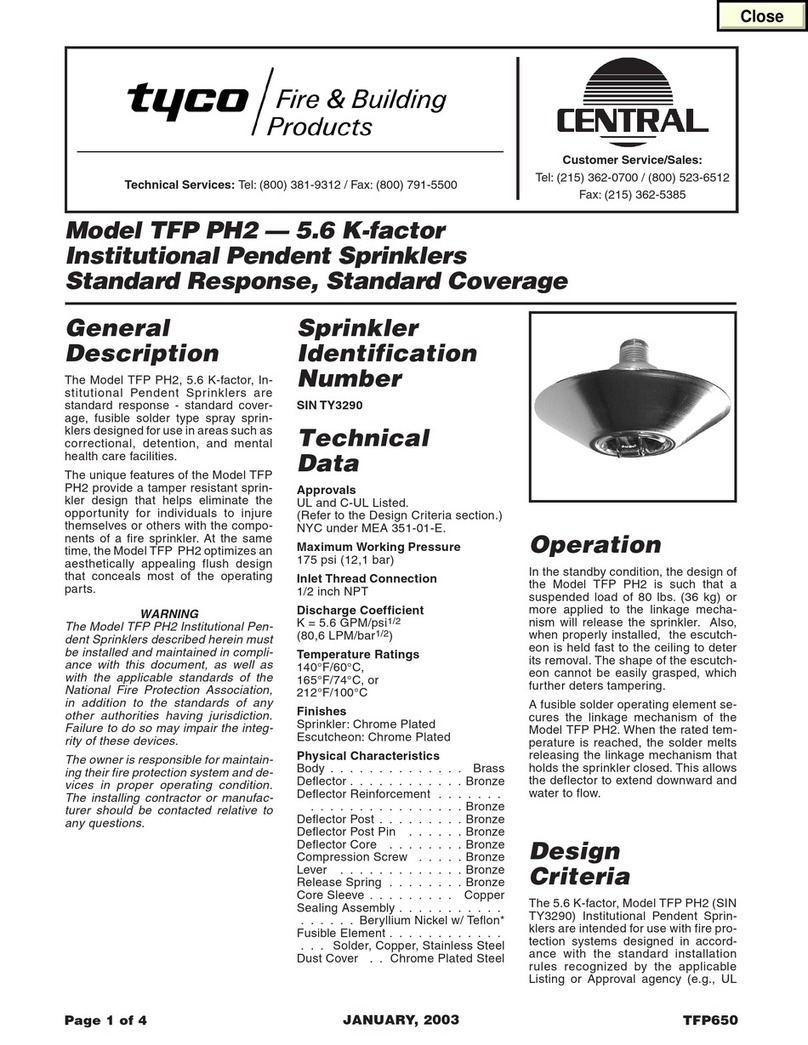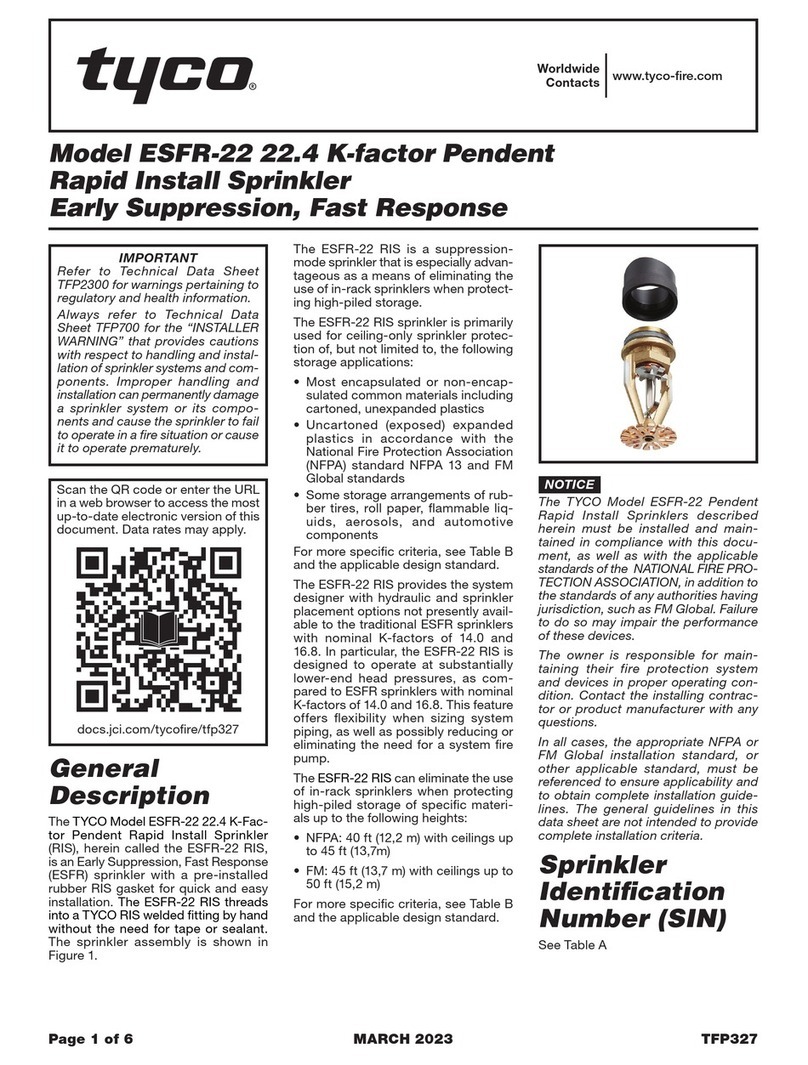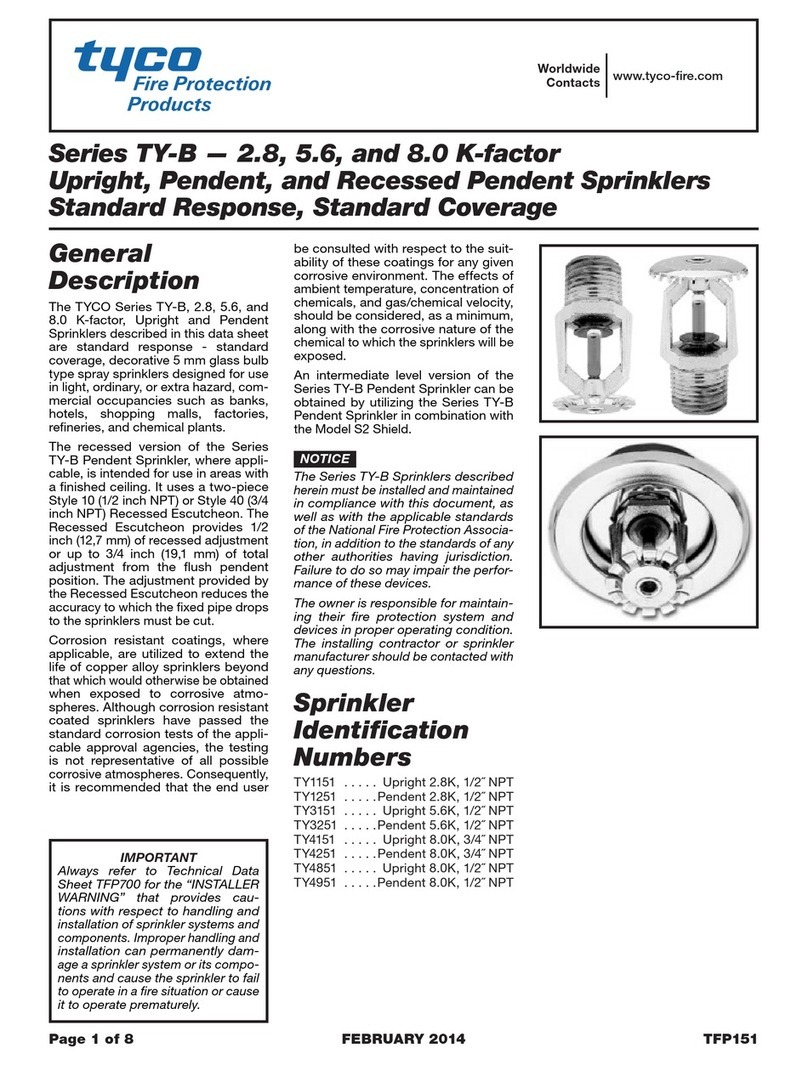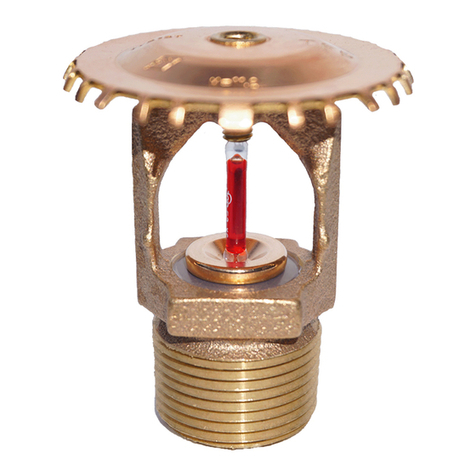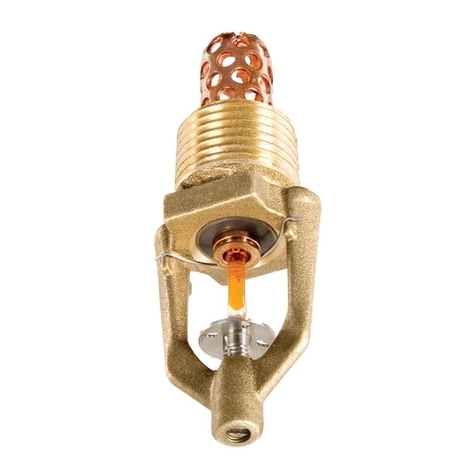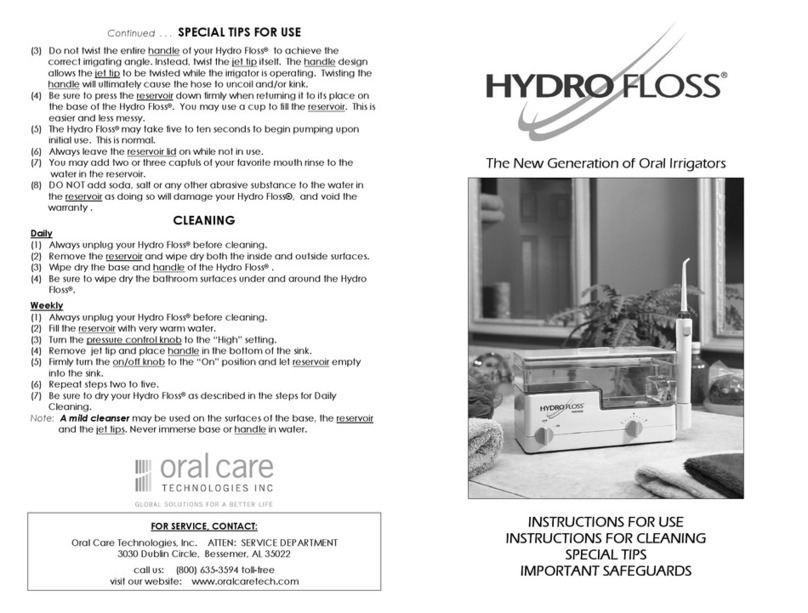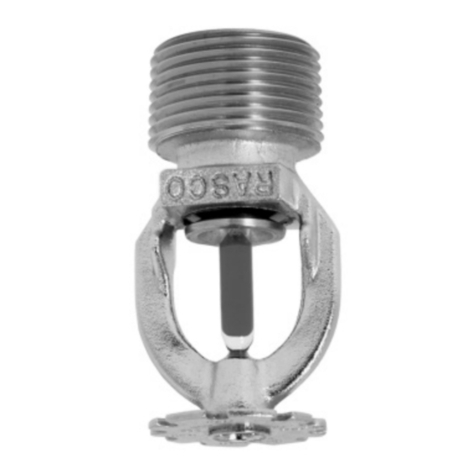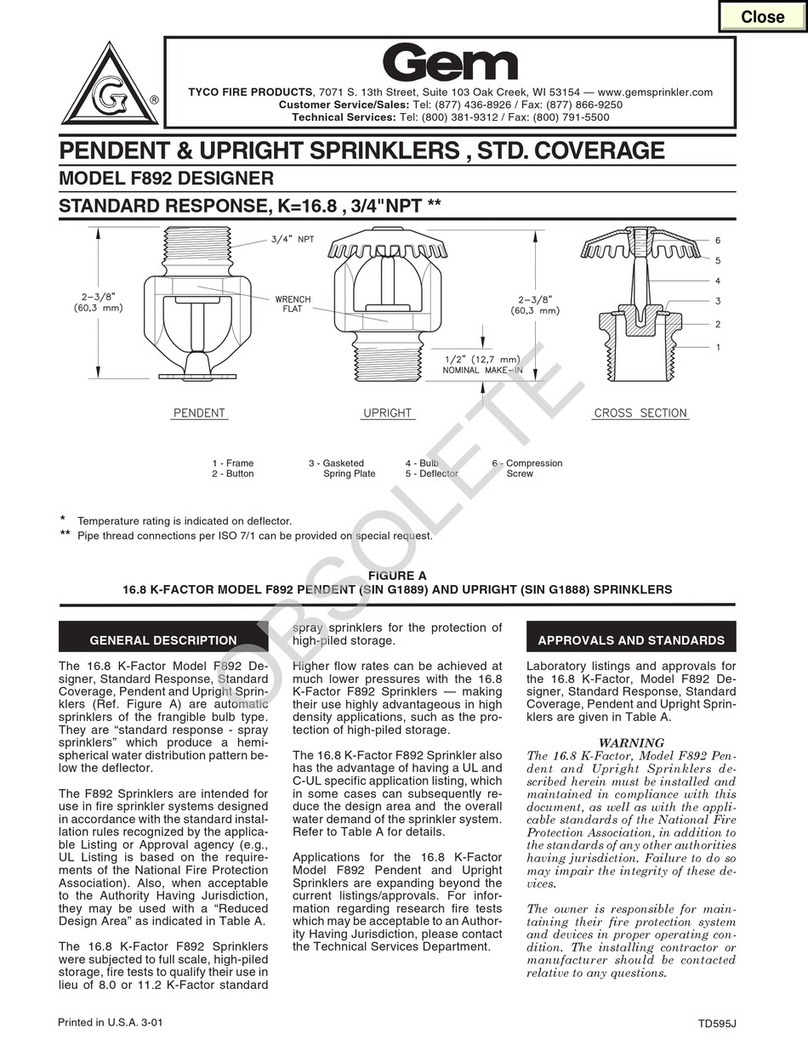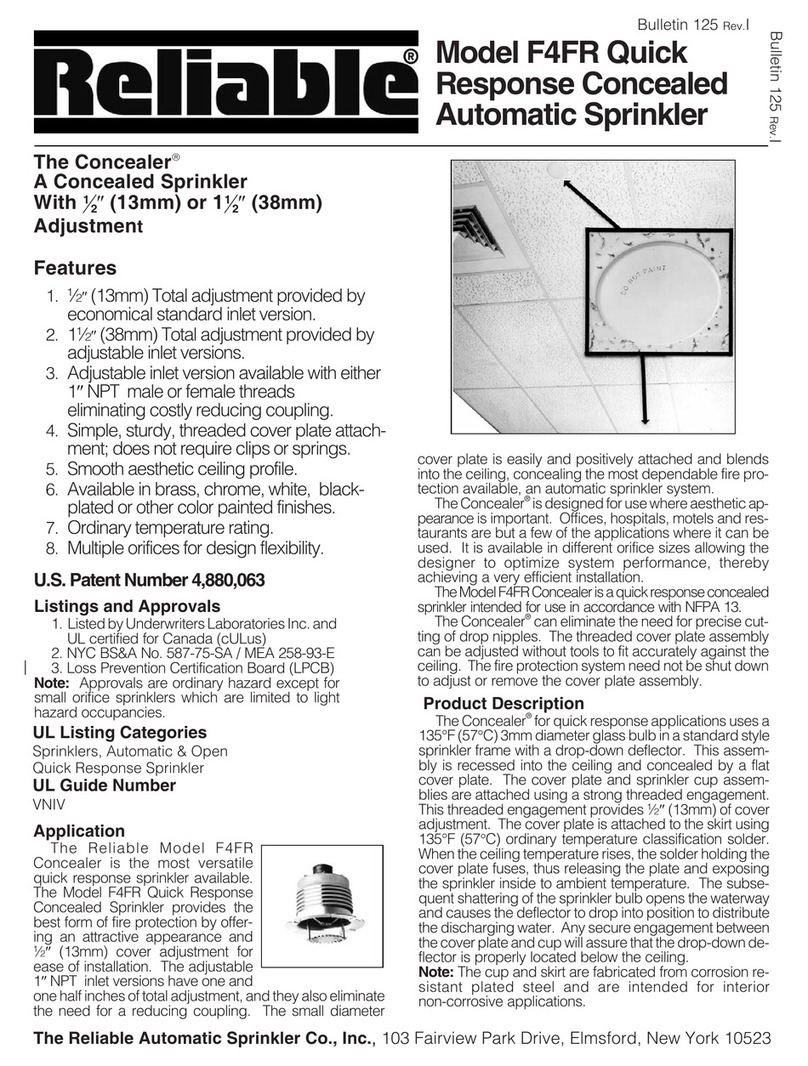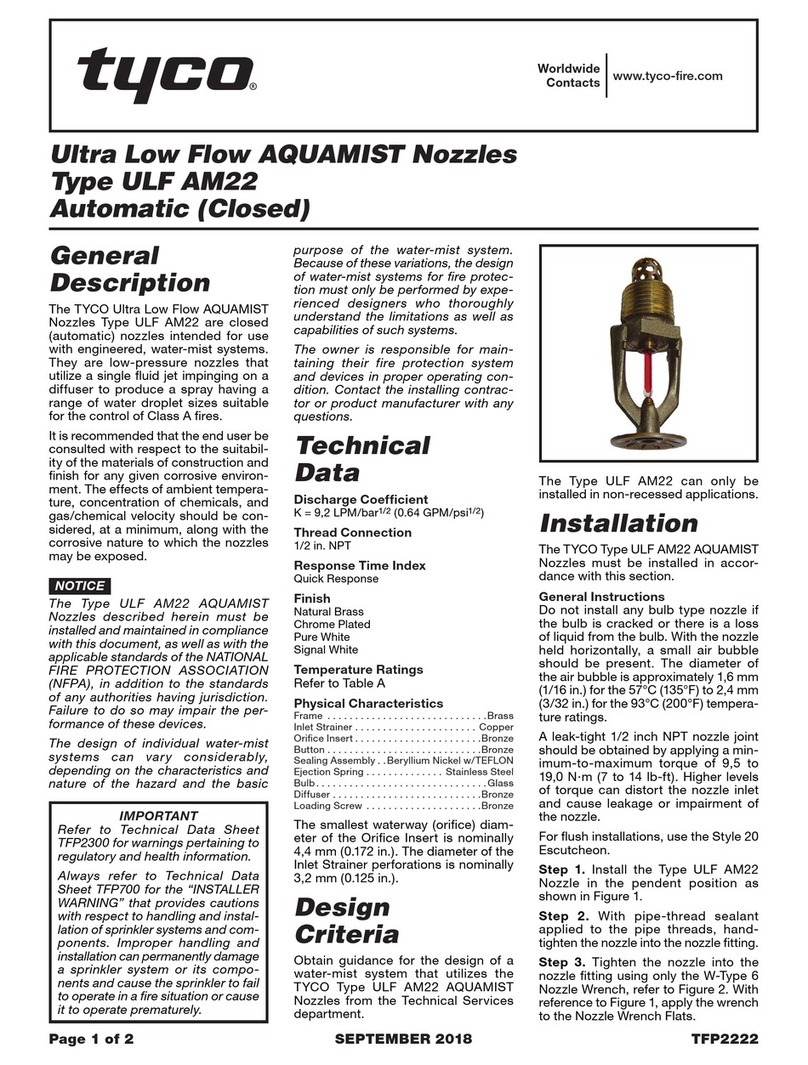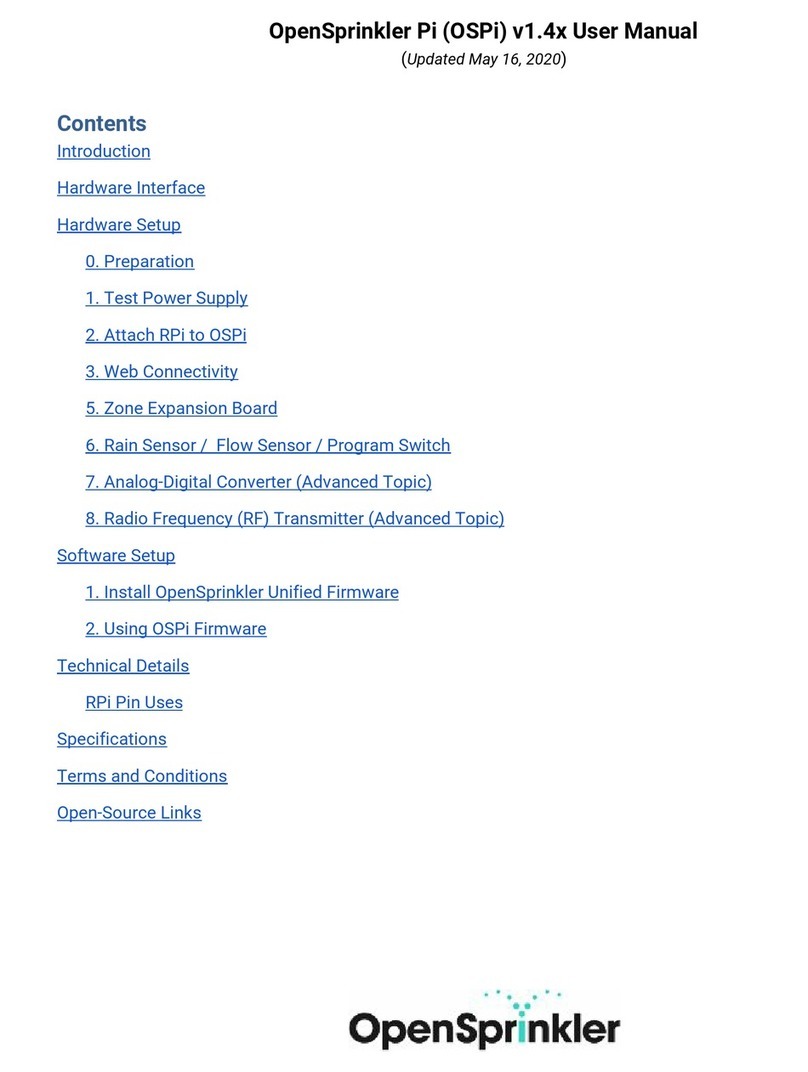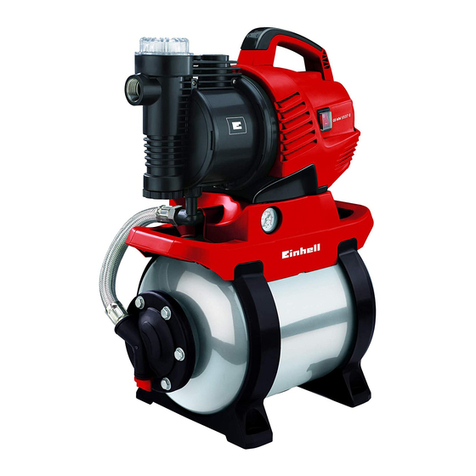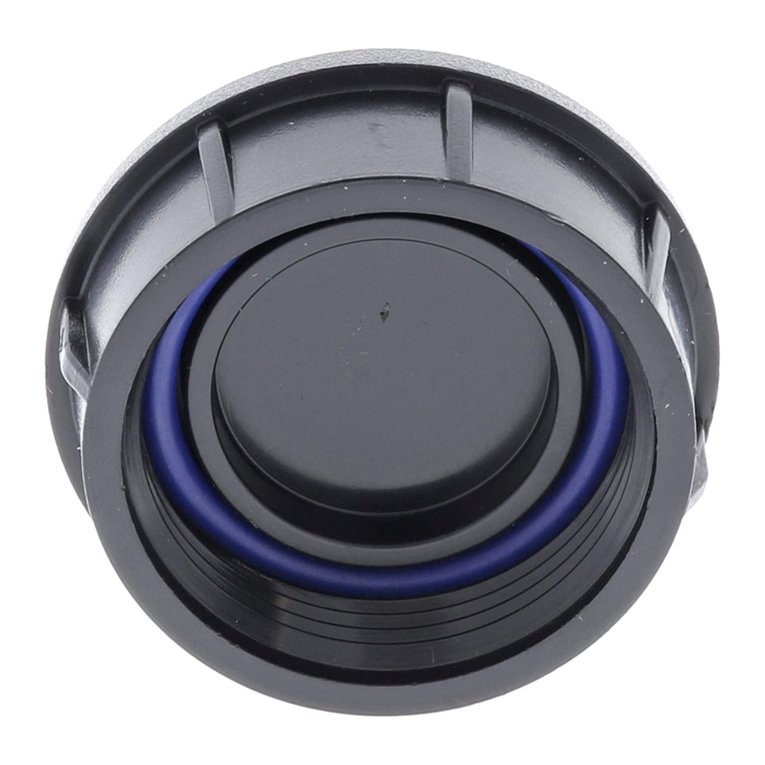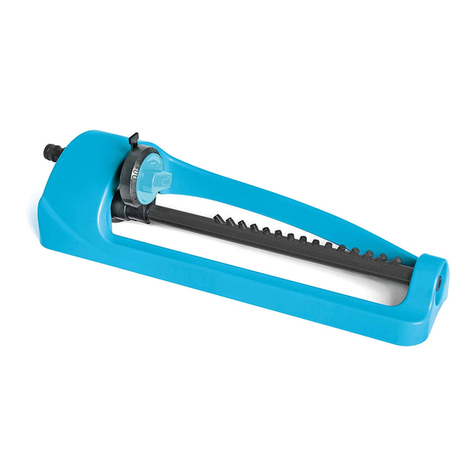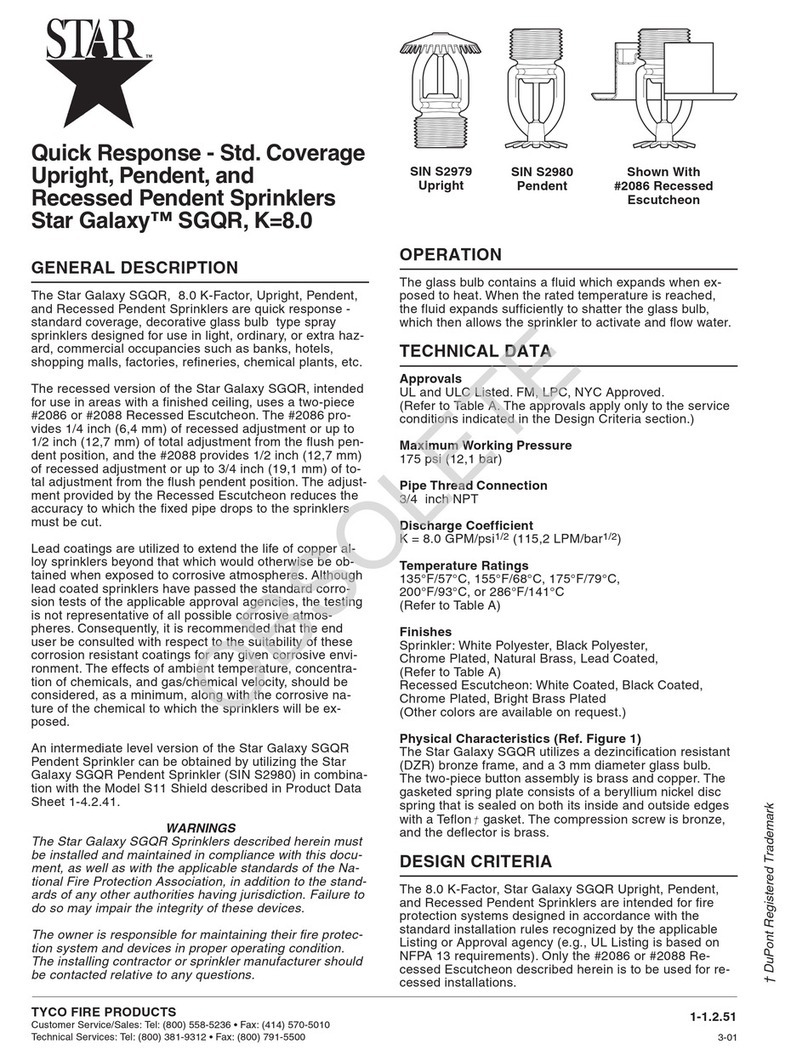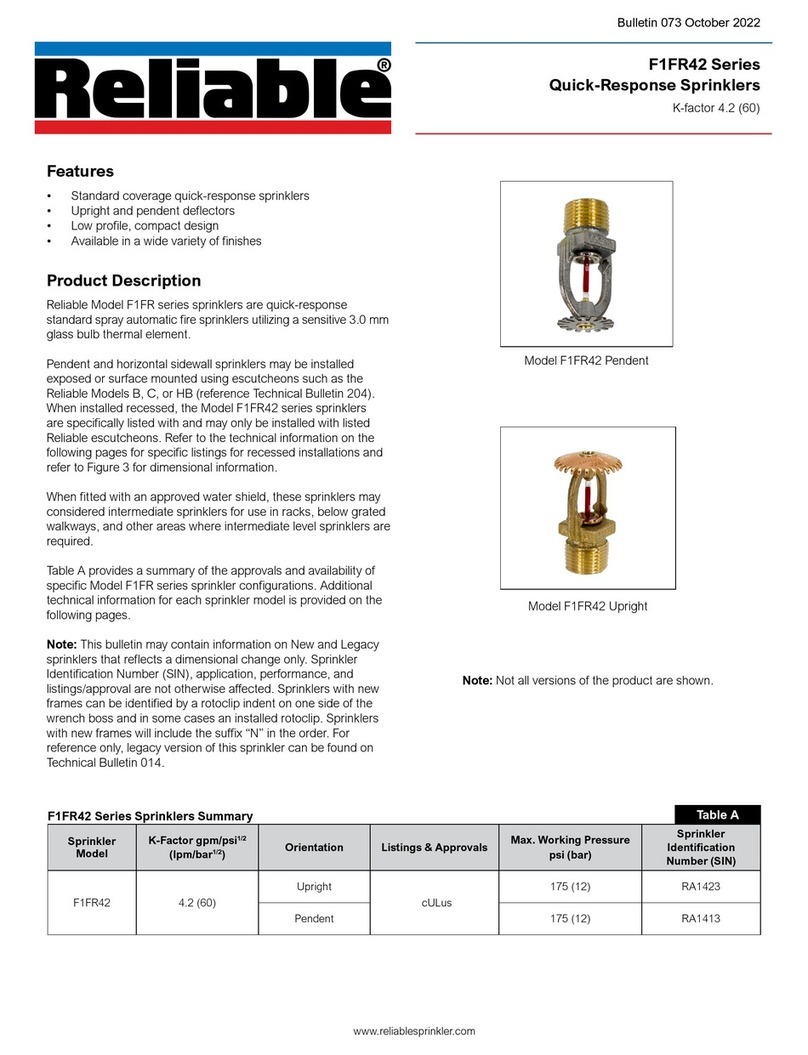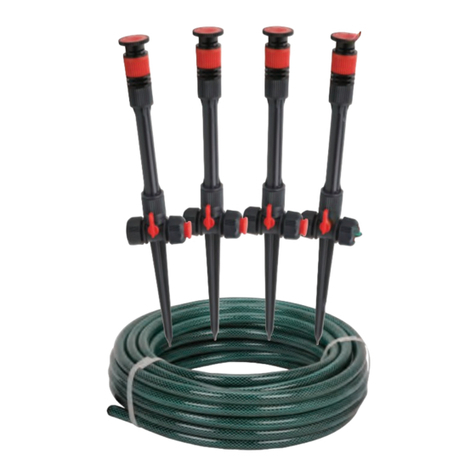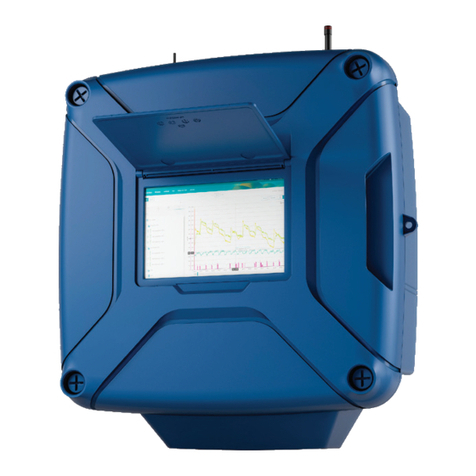
TFP447
Page 5 of 6
Installing the Sprinkler
Step 1. The sprinkler must only be
installed in the pendent position and
with the centerline of the sprinkler per-
pendicular to the mounting surface.
Step 2. Remove the protective cap.
Step 3. Ensure the sprinkler threads
are clean and do not have thread
sealant such as tape or paste applied.
Avoiding cross-threading, gently
thread the sprinkler into the fitting and
hand tighten until the sprinkler makes
contact with the gasket.
Step 4. Orient the sprinkler as needed
by applying the W-Type 43 wrench
as shown in Figure 3 to the sprinkler
wrench flats, and tighten up to an addi-
tional full turn, or by applying up to a
maximum torque of 7 lb-ft (9,5 N∙m).
Note: The TYCO Lead-Free Rapid
Response Series LFII Residential 4.9
K-factor Flat Plate Concealed Pendent
Sprinkler (TY3534) Wrench is designed
to limit the maximum installation torque
and break at excessively high torque. In
the event that the wrench breaks, the
sprinkler should be inspected. A new
wrench should be used to remove the
sprinkler.
Note: There are two ridges on the top
of the W-Type 43 wrench that can be
used for reference when aligning the
sprinkler guide pins with the pipe.
Step 5. Replace the protective cap by
pushing it upwards until it bottoms out
against the support cup. The protec-
tive cap helps prevent damage to the
deflector and guide pins during ceiling
installation and/or during application of
the finish coating of the ceiling. It may
also be used to locate the center of the
clearance hole by gently pushing the
ceiling material against the center point
of the cap.
Note: As long as the protective cap
remains in place, the system is consid-
ered to be “Out Of Service.”
Step 6. After the ceiling has been com-
pleted with the 2-1/2 in. (63 mm) diam-
eter clearance hole and in preparation
for installing the Cover Plate Assembly,
remove and discard the Protective Cap,
and verify that the Deflector falls to fully
operated position under its own weight.
If the sprinkler is damaged and the
deflector does not fall under its own
weight, replace the entire sprinkler
assembly. Do not attempt to modify or
repair a damaged sprinkler.
Step 7. Push on the Cover Plate
Assembly, and rotate as needed, until
its flange comes in contact with the
ceiling.
Do not continue to push on the Cover
Plate Assembly such that it lifts a
ceiling panel out of its normal position.
If the Cover Plate Assembly cannot
be engaged with the Mounting Cup
or the Cover Plate Assembly cannot
be engaged sufficiently to contact the
ceiling, the Sprinkler Fitting must be
repositioned.
Care and
Maintenance
The TYCO Lead-Free Rapid Response
Series LFII Residential 4.9 K-factor
Flat Plate Concealed Pendent Sprin-
kler (TY3534) must be maintained
and serviced in accordance with this
section.
Before closing a fire protection system
main control valve for maintenance
work on the fire protection system
which it controls, permission to shut
down the affected fire protection
system must be obtained from the
proper authorities and all personnel
who may be affected by this action
must be notified.
Absence of a Cover Plate may delay the
sprinkler operation in a fire situation.
When properly installed, there is an
air gap between the lip of the Cover
Plate and the ceiling. The Cover Plate
has a nominal 3/32 (2,4 mm) air gap,
as shown in Figure 2. This air gap is
necessary for proper operation of the
sprinkler by allowing heat flow from a
fire to pass below and above the Cover
Plate to help assure appropriate release
of the Cover Plate in a fire situation. If
the ceiling is to be repainted after the
installation of the Sprinkler, care must
be exercised to ensure that the new
paint does not seal off any of the air
gap.
Factory painted Cover Plates must not
be repainted. They should be replaced,
if necessary, by factory painted
units. Non-factory applied paint may
adversely delay or prevent sprinkler
operation in the event of a fire.
Do not pull the Cover Plate relative to
the Enclosure. Separation may result.
Sprinklers which are found to be
leaking or exhibiting visible signs of
corrosion must be replaced.
Automatic sprinklers must never be
painted, plated, coated, or otherwise
altered after leaving the factory. Modi-
fied or over heated sprinklers must be
replaced.
Care must be exercised to avoid
damage before, during, and after instal-
lation. Sprinklers damaged by drop-
ping, striking, wrench twist/slippage,
or the like, must be replaced.
The owner is responsible for the
inspection, testing, and maintenance of
their fire protection system and devices
in compliance with this document, as
well as with the applicable standards
of the NATIONAL FIRE PROTECTION
ASSOCIATION such as NFPA 25, in
addition to the standards of any other
authorities having jurisdiction. Contact
the installing contractor or product
manufacturer with any questions.
The owner must assure that the sprin-
klers are not used for hanging any
objects and that the sprinklers are only
cleaned by means of gently dusting
with a feather duster; otherwise, non-
operation in the event of a fire or inad-
vertent operation may result.
Automatic sprinkler systems should be
inspected, tested, and maintained by a
qualified Inspection Service in accor-
dance with local requirements and/or
national codes.
